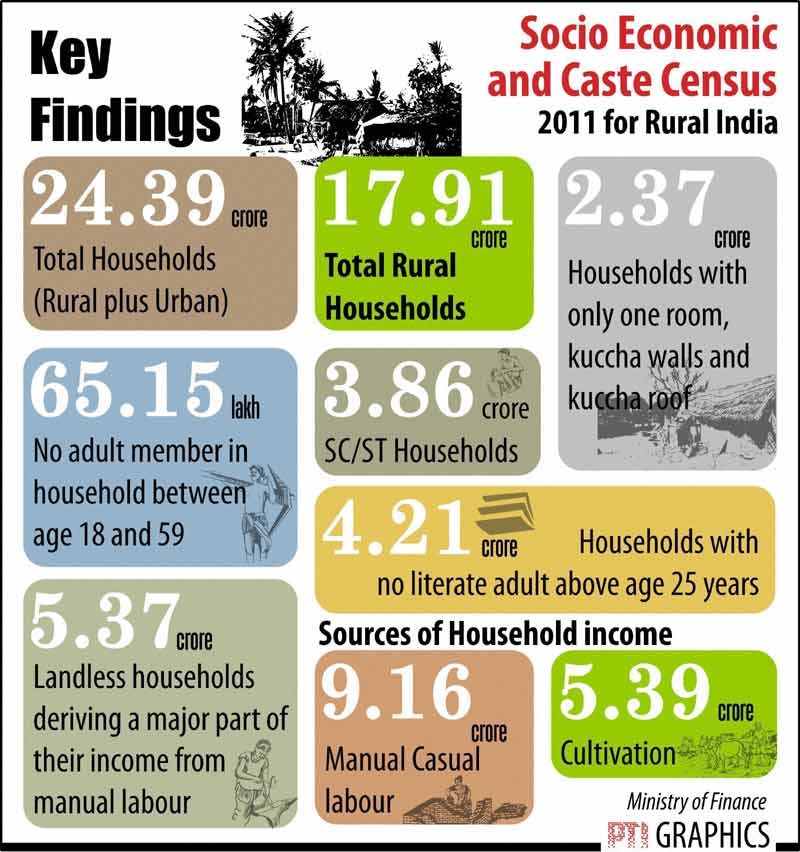Ahmedabad
(Head Office)Address : 506, 3rd EYE THREE (III), Opp. Induben Khakhrawala, Girish Cold Drink Cross Road, CG Road, Navrangpura, Ahmedabad, 380009.
Mobile : 8469231587 / 9586028957
Telephone : 079-40098991
E-mail: dics.upsc@gmail.com

Caste-Census
News: Last month, the Supreme Court upheld the 27% quota for Other Backward Classes (OBC) in the All-India Quota seats for the National Eligibility-cum-Entrance Test and reiterated that reservations for backward classes were not an exception but an extension of the principle of equality under Article 15(1) of the Constitution.This is seen as a positive discrimination in the Indian Context.
Background:
• Despite the underlying good intentions, positive discrimination has been a controversial topic. Many oppose affirmative actions like reservation; they believe that such provisions only perpetuate caste differences and they call for a “casteless society”.But, as Justice D.Y. Chandrachud pointed out, “castelessness” is a privilege that only the upper caste can afford because their caste privilege has already translated into social, political and economic capital.On the other hand, individuals who belong to the lower castes must retain their caste identity in order to claim the benefits of measures such as reservation, which recognise historic harm.
• The faith of our citizens cannot be restored until credible exercises of data collection are undertaken regarding caste.Even though data concerning the Scheduled Castes and Scheduled Tribes have been included in the Census, there is no similar data on OBCs.
• The Socio-Economic and Caste Census (SECC) conducted in 2011 has been called “faulty” and “unreliable”.
• Even the Mandal Commission’s recommendations were criticised as being based merely on the “personal knowledge” of the members of the commission and sample surveys.
Caste-based census:
• The Union government had told the Supreme Court that the caste-based data enumerated in the SocioEconomic Caste Census (SECC) of 2011 was “unusable”, but in 2016, the Registrar-General and Census Commissioner of India had informed the Standing Committee on Rural Development that 98.87% of the data on individual caste and religion was “error free”.
• The government had said that the total number of castes surveyed in 1931 was 4,147, while the SECC figures show that there are more than 46 lakh different castes. Assuming that some castes may bifurcate into sub-castes, the total number cannot be exponentially high to this extent.
• The entire exercise was corrupted because the enumerators had used different spellings for the same castes. In many cases the respondents, the government said, had refused to divulge their castes.
• In the Indra Sawhney case, the Supreme Court held that the States must conclude the “backwardness” of a particular class of people only after proper assessment and objective evaluation.
• It held that such a conclusion must be subject to periodic review by a permanent body of experts.
• While SC/ST details are collected as part of the census, details of other castes are not collected by the enumerators. The main method is by self-declaration to the enumerator.
• So far, backward classes commissions in various States have been conducting their own counts to ascertain the population of backward castes.
• Every Census in independent India from 1951 to 2011 has published data on Scheduled Castes and Scheduled Tribes, but not on other castes. Before that, every Census until 1931 had data on caste.
What is SECC 2011?
• The Socio-Economic Caste Census of 2011 was a major exercise to obtain data about the socio-economic status of various communities.
• It had two components: a survey of the rural and urban households and ranking of these households based on pre-set parameters, and a caste census.
• However, only the details of the economic conditions of the people in rural and urban households were released. The caste data has not been released till now.The Census provides a portrait of the Indian population, while the SECC is a tool to identify beneficiaries of state support.Since the Census falls under the Census Act of 1948, all data are considered confidential, whereas all the personal information given in the SECC is open for use by Government departments to grant and/or restrict benefits to households.
• The precise number of the population of each caste would help tailor the reservation policy to ensure equitable representation of all of them.
• There is a possibility that it will lead to heartburn among some sections and spawn demands for larger or separate quotas.It has been alleged that the mere act of labelling persons as belonging to a caste tends to perpetuate the system.

Address : 506, 3rd EYE THREE (III), Opp. Induben Khakhrawala, Girish Cold Drink Cross Road, CG Road, Navrangpura, Ahmedabad, 380009.
Mobile : 8469231587 / 9586028957
Telephone : 079-40098991
E-mail: dics.upsc@gmail.com
Address: A-306, The Landmark, Urjanagar-1, Opp. Spicy Street, Kudasan – Por Road, Kudasan, Gandhinagar – 382421
Mobile : 9723832444 / 9723932444
E-mail: dics.gnagar@gmail.com
Address: 2nd Floor, 9 Shivali Society, L&T Circle, opp. Ratri Bazar, Karelibaugh, Vadodara, 390018
Mobile : 9725692037 / 9725692054
E-mail: dics.vadodara@gmail.com
Address: 403, Raj Victoria, Opp. Pal Walkway, Near Galaxy Circle, Pal, Surat-394510
Mobile : 8401031583 / 8401031587
E-mail: dics.surat@gmail.com
Address: 303,305 K 158 Complex Above Magson, Sindhubhavan Road Ahmedabad-380059
Mobile : 9974751177 / 8469231587
E-mail: dicssbr@gmail.com
Address: 57/17, 2nd Floor, Old Rajinder Nagar Market, Bada Bazaar Marg, Delhi-60
Mobile : 9104830862 / 9104830865
E-mail: dics.newdelhi@gmail.com